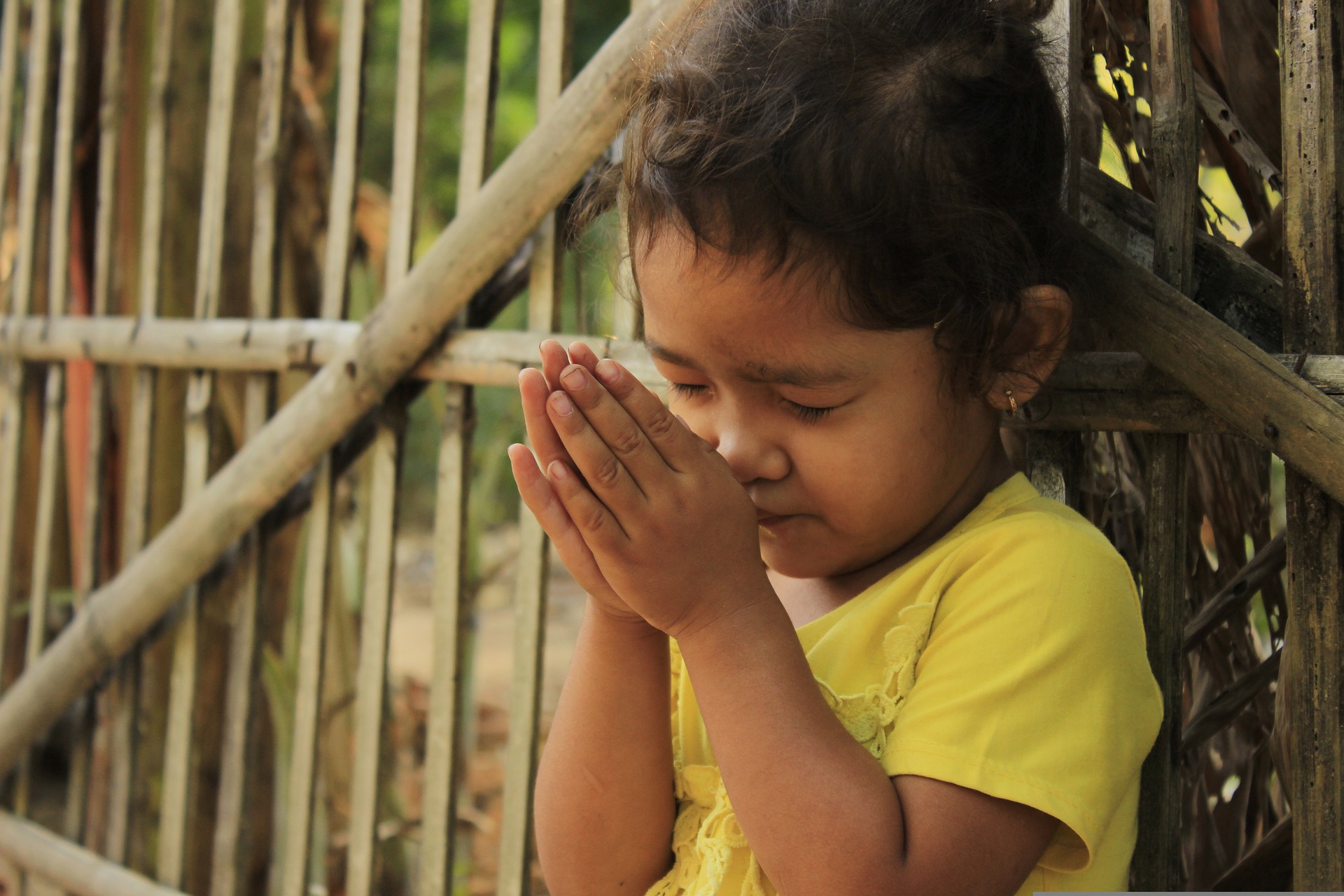Teach Kids the P-R-A-Y Acronym
By Maribeth Pipkorn
From the mundane to the serious, kids have many needs to bring to God.
“I’m in a concert on Friday, and I’m really nervous. Pray that I will do a good job!”
“My cousin is really sick. Pray that she will stop having seizures.”
“Please pray that my parents will stop fighting. I’m scared they’re going to get a divorce.”
Prayer is so much more than bringing needs. You can use the acronym PRAY, P-R-A-Y to teach kids how to talk to God.
P stands for Praise
“Enter his gates with thanksgiving, and his courts with praise!” (Psalm 100:4a) Teach kids to spend part of their prayer time praising and thanking God for who He is and what He has done. Praising God first, and reviewing His attributes helps to get us in the right mindset and perspective about God, helping us to pray more correctly about other things. The idea of praise can be a bit vague for a child, so make it practical and model it for them. Here are a few activities you can try:
- Pass a ball around the circle. When the ball comes to you, say “God, I praise you because you are ____” and fill in the blank with one of God’s attributes. (You may need to help the children think of truths they know about God: He is holy, loving, patient, kind, etc.)
- Another idea is to pray from head to toe! Have kids start at the top of their heads and work their way down their body thanking God for the amazing way He made them: “God, thank you for a mind that can think”, “Thank you for eyes that can see all the beautiful colors in the world”, “Thank you for a nose that can smell delicious food,” etc.
- Finally, pray Scripture. Teach through a Psalm (such as Psalm 23) one verse at a time, pausing after each verse to thank God for the truth it teaches, such as, “God, thank you that you are the Good Shepherd who gives us everything we need.”
Notice the word “thank you” came up a lot in praise time. Gratitude is a natural outpouring of praise.
After Praise, the R in the acronym PRAY stands for Repent
Encourage the saved kids in your class to get into the habit of regularly confessing their sin to God and seeking His help to turn from their sin and do the right thing. Remind them of His promise to forgive! “If we confess our sins, he is faithful and just to forgive us our sins and to cleanse us from all unrighteousness” (1 John 1:9). It’s human nature to defend and not be able to even think how we sinned. Talk about how hard that is and how we need to take time before the Lord to let His Holy Spirit convict and help us name our sin. Don’t forget to thank God for giving the conviction and the strength to repent, because without repentance, life becomes a big mess as a result of our sin. Repentance is not the part of prayer to dread, it’s actually a blessing. I like to encourage kids to lie in bed before going to sleep at night and talk over their day with God. As we review all that happened or was said, while in God’s presence, He gives us insight on unfinished business, as well as things for which to be thankful.
Next, the A in the acronym stands for Ask for Others
Challenge kids to intercede for the needs of others. Like all of us, kids are naturally selfish and tend to focus on their own needs first. You can ask questions to help them start thinking about the people around them and how those people might be struggling. You might provide a prompt such as, “Who do you know that’s sick?” or “Who do you know who doesn’t know Jesus as their Savior?”
Finally, Y stands for Your own needs
While prayer should never just be a laundry list of our own needs and concerns, let kids know that God does care deeply about their problems and concerns. 1 Peter 5:7 encourages them to be “casting all your anxieties on him, because he cares for you.” Let them know that no worry is too small for God to care about and no trial is too big for Him to handle. Make your home or class a safe place for kids to share personal prayer requests. Encourage your child’s prayer life with Praise, Repentance, Asking for Others, and Your own needs. See more at cefonline.com.
Stay Connected with CEF
Subscribe to our email lists to receive updates, news, and stories based on your needs and interests.

